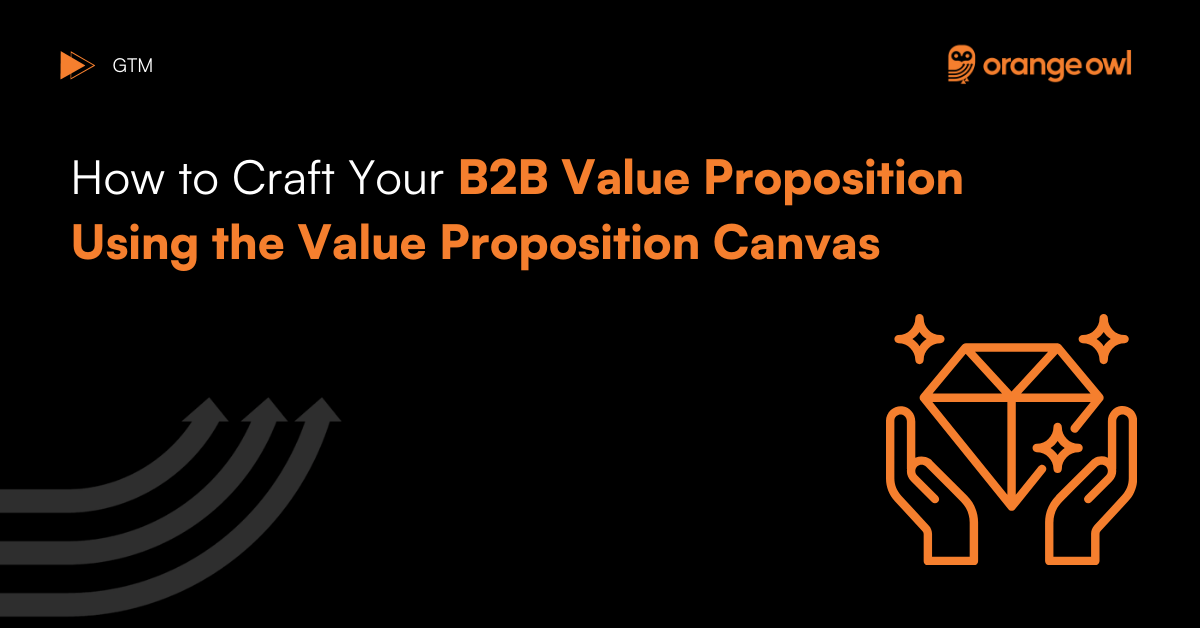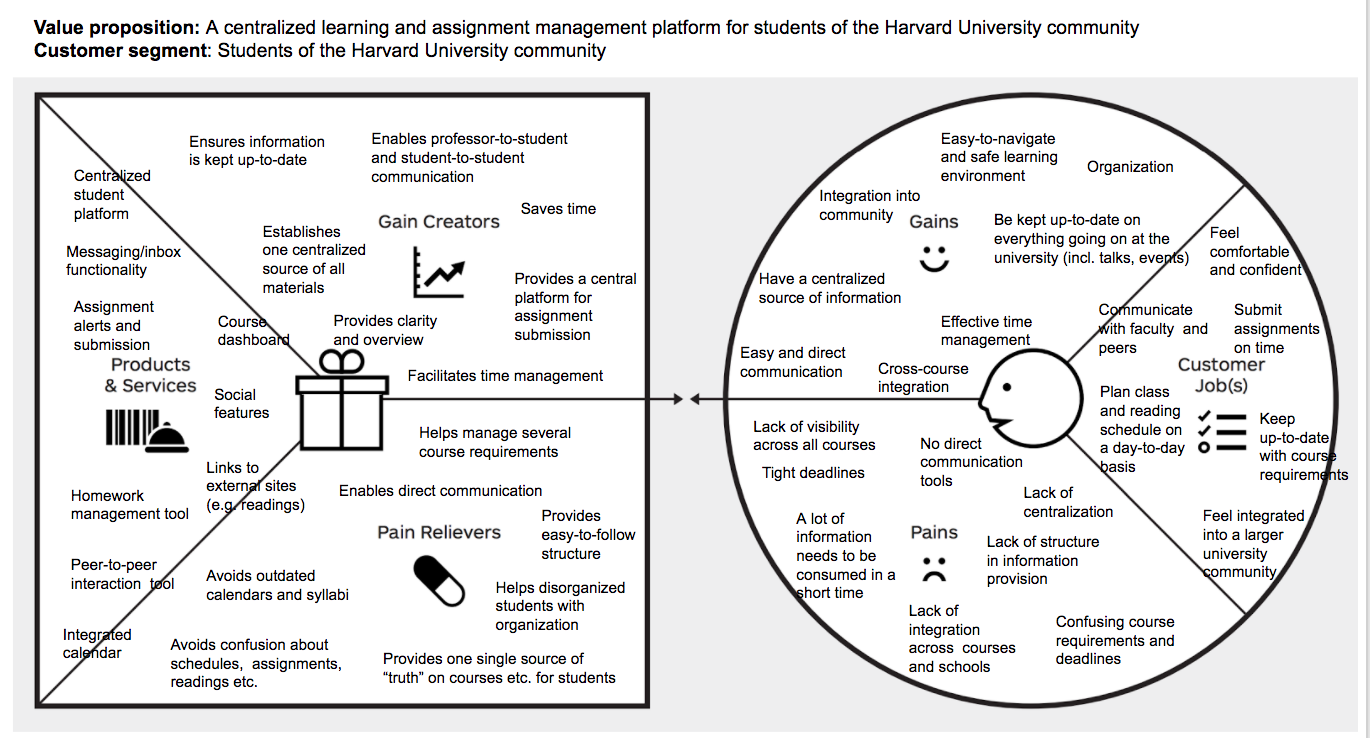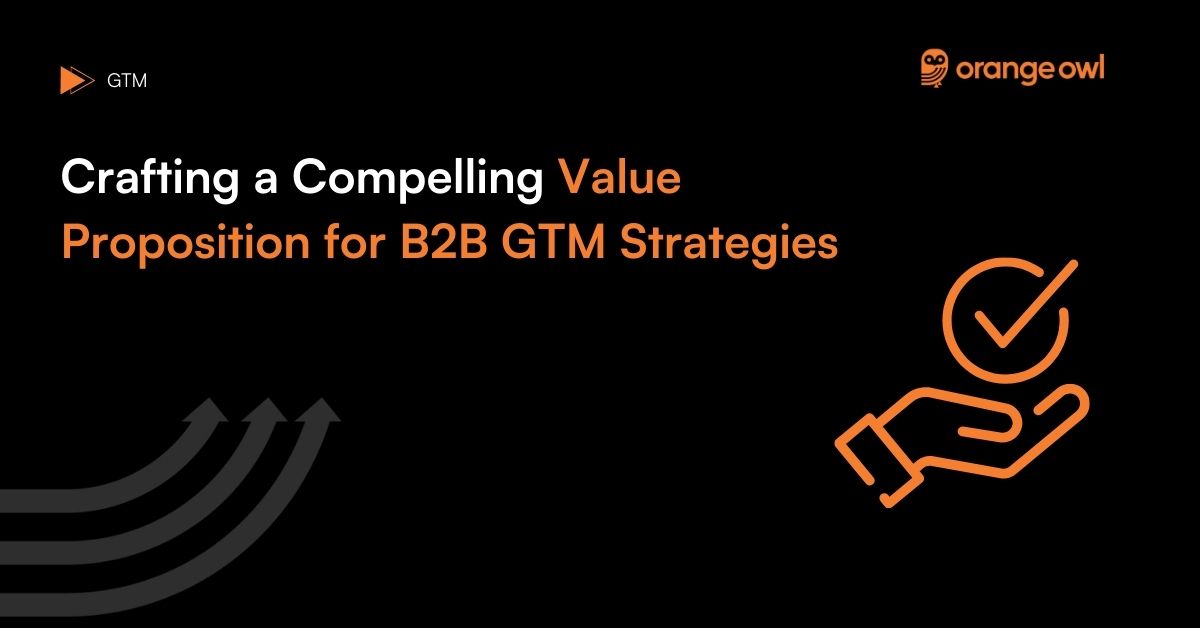How to Craft Your B2B Value Proposition Using the Value Proposition Canvas
Vivek Goel
July 18, 2024

Table of Contents
In the competitive landscape of B2B marketing, defining and communicating your value to customers is crucial. The Value Proposition Canvas (VPC) is a powerful tool that helps businesses understand their customers’ needs and design products or services that cater precisely to those needs. This blog will explore the components of the VPC, provide a step-by-step guide on how to use it, illustrate with B2B examples, and share expert tips and best practices.
What is the Value Proposition Canvas?
Developed by Alex Osterwalder, the Value Proposition Canvas is a framework that helps businesses identify and express the value their products offer to customers. It consists of two main parts: the Customer Profile and the Value Map.

Customer Profile
This section helps you understand your customer’s world. It includes:
- Customer Jobs: Tasks your customers are trying to get done, which can be functional, social, or emotional.
- Pains: Negative experiences, emotions, or risks that your customers experience in the process of getting the job done.
- Gains: The benefits your customers desire or would be happy to receive.
Value Map
This section describes how you intend to create value for your customers. It includes:
- Products & Services: The list of products and services your business offers.
- Pain Relievers: How your products alleviate specific customer pains.
- Gain Creators: How your products create gains for your customers.
Step-by-Step Guide to Using the Value Proposition Canvas
Step 1: Define Customer Jobs
- Start by identifying all the tasks your B2B customers need to complete in their roles. For instance, a procurement manager’s job might include sourcing suppliers, negotiating contracts, and managing supply risks.
Step 2: Identify Customer Pains
- Determine the struggles and challenges associated with each job. For the procurement manager, pains might include the difficulty in comparing supplier offers, the time-consuming nature of negotiations, or the risk of supply chain disruptions.
Step 3: Outline Customer Gains
- Consider the benefits or outcomes that customers want. In our example, gains might include achieving cost savings, improving supply chain efficiency, or reducing time spent on vendor management.
Step 4: List Products and Services
- Detail the specific products or services you offer that help the customer complete their jobs. This might be a cloud-based procurement software that automates and streamlines the sourcing process.
Step 5: Map Pain Relievers
- Connect your products and services to the customer pains they alleviate. Perhaps your software provides features that allow for easy comparison of supplier bids, thus reducing the time and effort needed in decision-making.
Step 6: Define Gain Creators
- Link your offerings to the gains they create for customers. Your procurement software might offer analytics features that help customers optimize their spending and save money.
B2B Example for Value Proposition Canvas
Company: TechSolutions, a provider of cybersecurity solutions. Customer: IT Managers at medium-sized enterprises.
- Jobs: Ensure company data security, manage IT infrastructure.
- Pains: Complexity of security management, high cost of data breaches, difficulty in compliance with data protection regulations.
- Gains: Enhanced security, cost-effective solutions, compliance with laws.
TechSolutions offers a suite of cybersecurity products that simplify security management (Pain Reliever), reduce the risk of data breaches with advanced threat detection technologies (Gain Creator), and ensure compliance through automated regulatory compliance features (Gain Creator).
Another Example of Value Proposition Canvas

Expert Tips and Best Practices
- Customer-Centric Approach: Always start with the customer profile before looking at your solutions. Understanding your customer deeply ensures that the value you propose aligns with their needs.
- Iterative Process: The VPC should be used as an iterative tool. As you learn more about your customers and your market, revisit and adjust the canvas.
- Use Real Data: Base your canvas on real-world data from customer interviews, surveys, and market research to ensure accuracy.
- Simplify and Focus: Avoid overcomplication. Focus on the most significant jobs, pains, and gains.
- Alignment: Ensure that every pain reliever and gain creator directly addresses points in the customer profile.
Conclusion
The Value Proposition Canvas is an essential tool for B2B companies looking to refine their offerings based on detailed customer insights. By thoroughly understanding your customers and clearly defining how your products and services meet their needs, you can enhance your market position and ensure your solutions are genuinely valuable to your customers. This strategic approach not only improves customer satisfaction but also drives business growth.
Top Frequently Asked Questions (FAQs) for Value Proposition Canvas
Yes, the Value Proposition Canvas is versatile and can be applied to both products and services. It helps in understanding and designing value propositions that meet the specific needs of customers regardless of the nature of the offering.
It’s advisable to review and possibly update your Value Proposition Canvas regularly, especially when there are significant changes in the market, customer preferences, or your own product offerings. This ensures that your value proposition remains relevant and competitive.
Data for the Value Proposition Canvas should come from direct customer interactions, such as interviews, surveys, and feedback, as well as market research that includes competitor analysis and industry trends.
The Value Proposition Canvas complements other business tools like the Business Model Canvas by providing a deep dive into the value proposition and customer segments aspects. It can enhance strategic alignment and coherence across all business planning tools.
Both startups and established businesses can benefit from the Value Proposition Canvas. For startups, it helps in clearly defining the value they offer to potential customers. For established businesses, it’s a valuable tool for reassessing and refining their value propositions in response to evolving market conditions or new business objectives.


